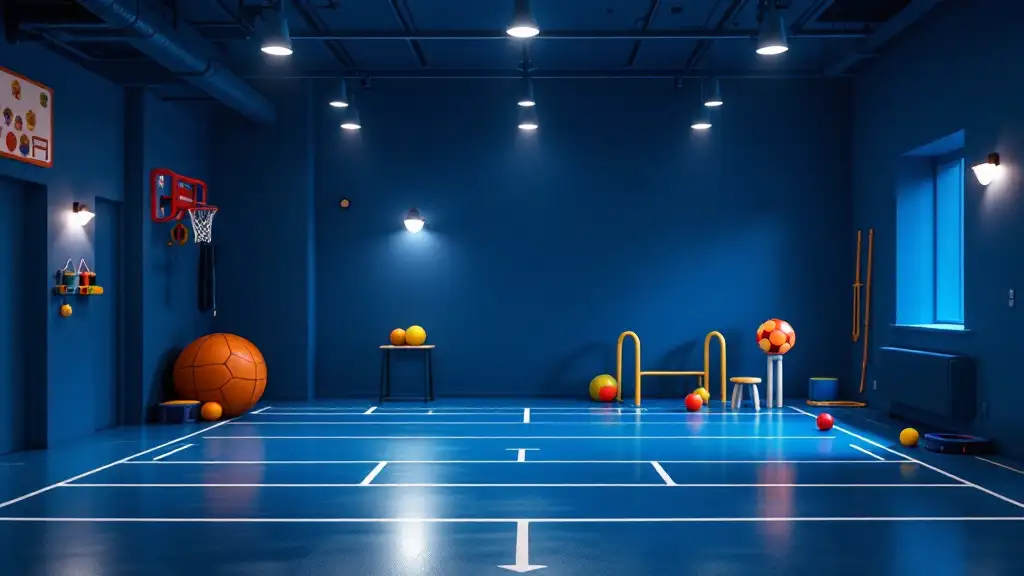
Understanding the Foundations of Fine Motor Development
Fine motor coordination involves intricate movements of small muscles in the hands and fingers, essential for everyday activities and academic success. From grasping a pencil to buttoning a shirt, these skills underpin a child's independence and confidence. Early identification of delays and appropriate occupational therapy interventions can significantly improve functional abilities, supporting children in achieving developmental milestones and navigating their environment effectively.
Goals of Occupational Therapy in Fine Motor Development

What are the goals of occupational therapy in developing fine motor coordination?
Occupational therapy aims to improve small hand and finger movements that are essential for daily life. Children work on developing strength, dexterity, and precision, allowing them to perform tasks such as writing, buttoning, zipping, and manipulating small objects more easily.
A major focus is enhancing eye-hand coordination, which is crucial for activities like catching a ball or drawing within lines. Therapy also targets bilateral coordination, helping children use both hands together effectively, and finger isolation, which is the ability to move specific fingers independently—an important skill for writing and buttoning.
Therapists utilize engaging, play-based activities, sensory integration techniques, and adaptive tools to support skill development. These methods make learning fun while promoting functional improvements.
Supporting independence is a central goal. Occupational therapy helps children build confidence in their ability to complete everyday tasks. It also encourages attention span and the endurance needed to complete activities without frustration.
Structured exercises and activities—such as using play dough, threading beads, or practicing scissor skills—are tailored to each child's needs. These interventions foster mastery of skills through incremental progress.
Overall, the objective is to equip children with the fine motor skills required to participate fully in school, hobbies, and daily self-care routines. This comprehensive approach enables children to become more confident and independent in their movements, improving their quality of life and academic success.
How Occupational Therapy Improves Fine Motor Skills

How can occupational therapy help improve fine motor skills?
Occupational therapy (OT) plays a vital role in developing and restoring fine motor skills, which are essential for children’s independence, school success, and daily activities. Therapists tailor individualized activities that specifically target various components of fine motor control.
One of the primary strategies involves designing activities that hone in on grasp patterns such as the pincer grasp, tripod grasp, and other fine finger movements. These exercises help strengthen hand and finger muscles, improve coordination, and foster skillful manipulation of objects. Techniques include threading beads, completing puzzles, squeezing and rolling playdough, and practicing common daily tasks like tying shoelaces or using utensils.
In addition to play-based and functional activities, therapists incorporate specialized tools to promote independence. These include grabbers, reachers, and adaptive aids that make tasks easier and enhance precision. For example, using tweezers, long-handled cutlery, or textured grips can help children and adults improve their control and safety during tasks.
Addressing different age groups requires age-appropriate approaches. For children, therapy focuses on developing skills necessary for academic tasks such as handwriting, cutting, and dressing. For adults, especially those recovering from injuries or managing conditions like arthritis or neurological disorders, OT emphasizes rehabilitation, strengthening hand muscles, improving dexterity, and adapting routines to maintain independence.
Therapists continuously monitor progress through assessments and observations, adjusting interventions as needed to maximize benefits. This flexibility ensures that therapy remains effective and encourages continuous improvement.
Overall, occupational therapy supports the enhancement of fine motor skills through practical, engaging, and personalized activities rooted in evidence-based practices. These interventions help individuals achieve greater confidence and functionality in their everyday lives, whether children learning to write or adults recovering strength and coordination after injury.
Activities That Support Fine Motor Development in Children

What are effective activities to enhance fine motor skills in children?
Supporting the development of fine motor skills in children involves engaging them in various purposeful activities that strengthen small muscles in the hands and fingers. These activities are designed to improve coordination, strength, dexterity, and precision, all of which are crucial for tasks like writing, dressing, and daily self-care.
For young children just beginning to develop these skills, simple yet effective activities include peeling stickers to practice the pincer grasp, stringing Cheerios to improve visual-motor coordination, ripping or crumpling paper to strengthen hand muscles, and drawing with sidewalk chalk to enhance wrist and finger control. These activities also help children develop the coordination needed for more complex movements.
As children grow, activities can become more refined and challenging. For example, attaching clothespins to objects helps improve grasp strength and control, while threading and lacing beads enhance fine motor precision. Making putty figures, playing pick-up sticks, blowing bubbles, and sorting coins target a variety of skills, including hand-eye coordination, pinching, and bilateral hand use.
Occupational therapists recommend incorporating these activities into daily routines. They often include play-based tasks and use of tools that promote bimanual coordination—using both hands together. Activities such as opening containers, using scissors, and applying glue with precision further develop manual dexterity.
Creating a balanced activity regimen that involves these tasks supports overall fine motor development. Consistent practice, ideally daily or several times a week, can significantly improve a child's capacity to perform everyday activities independently.
By engaging in these targeted activities, children can enhance their grasp, strength, control, and coordination. This, in turn, fosters confidence and independence essential for academic success and everyday functioning.
In summary, effective activities for developing fine motor skills in children include:
| Activity | Purpose | Description |
|---|---|---|
| Peeling stickers | Pincer grasp | Practicing pinching with thumb and index finger |
| Stringing Cheerios | Visual-motor coordination | Threading small objects onto a string |
| Ripping/crumpling paper | Hand strength | Strengthening hand and finger muscles |
| Placing coins in a piggy bank | Pincer and visual skills | Improving grasp and hand-eye coordination |
| Attaching clothespins | Grasp and strength | Pinching and gripping objects |
| Drawing with sidewalk chalk | Wrist and finger control | Enhancing control and precision |
| Threading and lacing beads | Fine motor accuracy | Precision and bilateral coordination |
| Making putty figures | Strength and manipulation | Hand strengthening and motor planning |
| Playing pick-up sticks | Dexterity | Picking up and placing small objects |
| Blowing bubbles | Oral motor and coordination | Exhaling with control |
| Sorting coins | Cognitive and motor skills | Recognizing, grouping, and grasping |
These activities are supported by pediatric occupational therapists and can be tailored to each child's developmental level, ensuring steady progress toward independence in daily tasks.
Identifying the Need for Occupational Therapy in Fine Motor Development

What developmental milestones and signs indicate the need for occupational therapy intervention in fine motor development?
Monitoring a child's progress in achieving developmental milestones is essential in determining if they need occupational therapy for fine motor skills. Typical milestones include grasping objects, developing a pincer grasp (using thumb and forefinger), and demonstrating hand-eye coordination. When a child shows delays in reaching these feats relative to their age, it may signal the need for professional help.
Children who struggle to manipulate small objects such as buttons, zippers, or coins may exhibit signs of fine motor delays. Difficulties in using utensils like spoons and forks, drawing basic shapes, or cutting with scissors also point to underlying coordination issues. These challenges can impact their independence in daily routines and academic activities.
Poor hand strength is another indicator. If a child tires quickly during activities requiring grasping or manipulative skills or exhibits shaky or weak handwriting, occupational therapy can help strengthen these muscles. Moreover, difficulties with visual-motor integration—such as copying shapes or aligning writing within lines—are common signs that intervention could be beneficial.
Additional signs include regression in previously acquired skills, meaning a child loses or struggles to perform tasks they previously managed easily. Sensory processing challenges, which can manifest as over-responsiveness or under-responsiveness to tactile stimuli, may also interfere with fine motor development.
Recognizing these indicators early ensures timely intervention. An occupational therapist can assess these skills comprehensively and recommend tailored activities or therapies to support functional development. Addressing delays promptly can enhance a child's confidence and competence in everyday tasks, including self-care, schoolwork, and recreational activities.
Signaling the need for professional support
Understanding when a child's fine motor skills need intervention can prevent further difficulties. If multiple signs are present—such as persistent trouble with grasping, handwriting struggles, or sensory issues—seeking evaluation from a pediatric occupational therapist is advisable.
Early intervention often involves engaging activities, sensory integration techniques, adaptive strategies, and exercises aimed at improving muscle strength, coordination, and task-specific skills. These efforts foster greater independence and enhance the child's overall well-being.
Ultimately, the goal of occupational therapy is to support children in achieving age-appropriate milestones, reducing frustration, and enabling successful participation in daily activities at home and school.
Strategies for Age-Specific Fine Motor Improvement

What are some age-specific strategies for improving fine motor skills through occupational therapy?
Occupational therapists tailor their approaches to match the developmental stage of each child, creating engaging and effective activities that promote fine motor skills.
Toddlers (1-3 years): For the youngest children, therapy focuses on play-based activities that develop grasp and hand awareness. Simple tasks such as manipulating play dough, stacking blocks, tearing paper, and grasping small objects help strengthen hand muscles and improve coordination. These activities encourage early hand-eye coordination and tactile exploration.
Preschoolers (3-5 years): As children grow, more complex activities are introduced. Lacing cards, beading, and cutting with safety scissors help enhance in-hand manipulation, bilateral coordination, and visual-motor integration. These tasks prepare children for school activities like writing and drawing by refining their grip and control.
School-aged children (6 years and older): For older children, therapy often emphasizes refining handwriting, using special adaptive tools, and engaging in fine motor crafts such as threading, embossing, or assembling small models. Structured handwriting programs, like Handwriting Without Tears, focus on improving letter formation and penmanship. Activities also include finger strengthening exercises like squeezing therapy putty and practicing precise cutting.
Incorporating sensory techniques and strengthening exercises across ages: Throughout all developmental stages, integrating sensory input—such as tactile exploration with textured materials—and strength-building activities benefits overall fine motor development. These can include resistive exercises with therapy putty, balanced bilateral activities, and functional tasks like dressing or food preparation.
This systematic, age-appropriate approach ensures that children develop the necessary skills gradually while remaining active and motivated, leading to greater confidence and independence in daily tasks.
The Role of Occupational Therapy in Supporting Children's Fine Motor Skills
How does occupational therapy support fine motor development in children?
Occupational therapy plays a vital role in helping children develop and refine their fine motor skills. Therapists provide customized exercises and activities tailored to each child's unique needs, focusing on improving control, coordination, and strength of the small muscles in the hands and fingers. This individualized approach ensures that children are working on the specific skills they need to succeed in daily tasks.
A core aspect of therapy involves targeting key skills like grasp patterns, such as the pincer grasp and tripod grasp, as well as in-hand manipulation—everything from turning pages to buttoning clothes. Hand stability and wrist control are also emphasized, as these foundational skills support more complex movements necessary for writing, cutting, and self-care.
To make therapy engaging and accessible, occupational therapists often incorporate adaptive equipment and modifications. For example, they might recommend pencil grips, slanted writing surfaces, or special tools that ease the task of grasping or manipulating small objects. Sensory integration techniques may also be used to help children better process tactile information, improving their coordination.
Play-based activities form a cornerstone of therapy, transforming exercises into fun tasks that motivate children while fostering motor development. Activities such as puzzles, beading, molding with clay, and craft projects not only target specific skills but also boost confidence and enjoyment.
Throughout therapy, progress is closely monitored. Therapists regularly assess improvements and adjust strategies or introduce new activities to ensure continuous development. This adaptive process guarantees that children receive the appropriate level of challenge and support at each stage of their growth.
In summary, occupational therapy employs a comprehensive and flexible approach to nurture fine motor skills. It combines personalized exercises, adaptive tools, sensory techniques, and playful activities to help children become more independent and confident in their daily lives.
Empowering Children for Life's Small but Critical Movements
Occupational therapy plays a vital role in developing children’s fine motor skills, which are foundational to independence and participation. Through targeted activities, sensory integration, adaptive strategies, and ongoing progress monitoring, therapists help children overcome delays, strengthen small muscles, and master essential tasks. Early intervention and consistent support enable children to confidently engage in school, self-care, and recreational activities, setting the stage for lifelong skills and well-being. Supporting children’s small movements translates into bigger successes in their academic performance, social interactions, and personal confidence, making occupational therapy an indispensable part of holistic child development.
References
- 35 Fine Motor Activities: Therapists' Ultimate List - NAPA Center
- Fine Motor Skills: What They Are, Development & Examples
- The Role of Occupational Therapy in Fine Motor Development
- Developing Precision Movements: Occupational Therapy's Crucial ...
- OT to the Rescue! Educational Play for Fine Motor Skill Development
- Improving Fine Motor Skills - Together by St. Jude™
- Fine Motor | Occupational Therapy - Shrewsbury Public Schools
- Occupational Therapy Techniques for Improving Fine Motor Skills in ...












